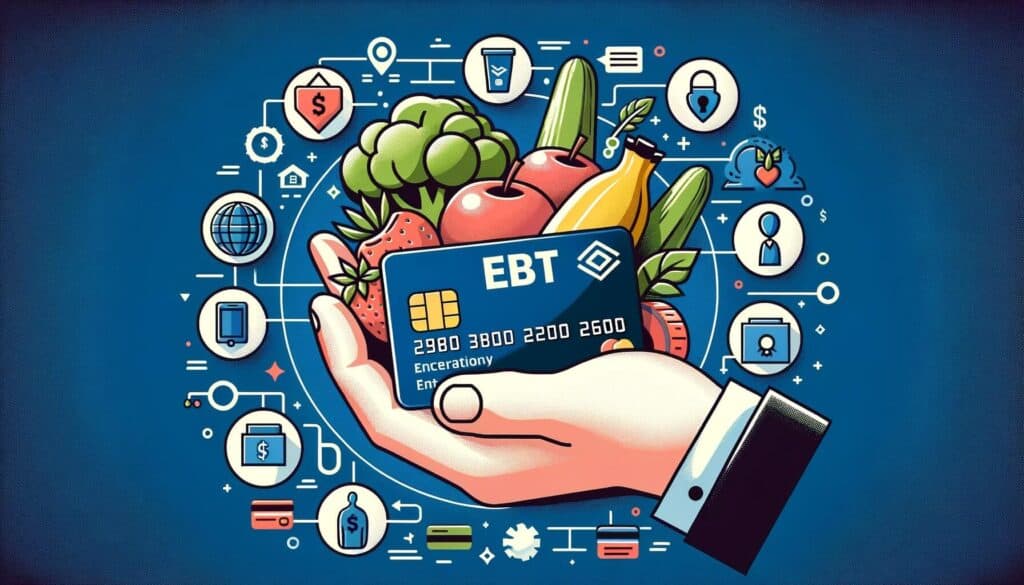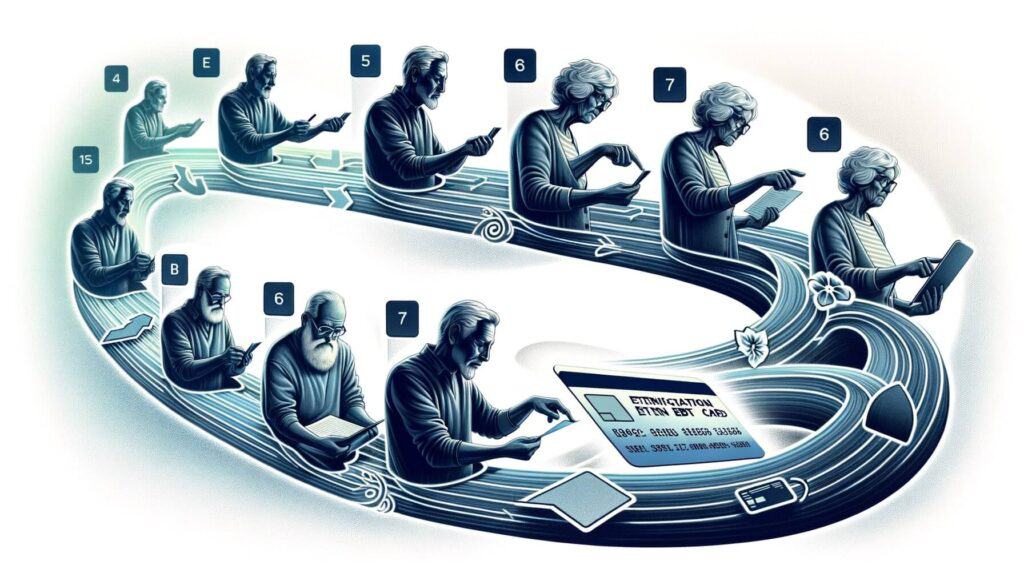
By Sharon Watson February 22, 2025
In today’s society, many seniors find themselves struggling to make ends meet. Rising healthcare costs, limited retirement savings, and the high cost of living can all contribute to financial difficulties for older adults. To help alleviate some of these challenges, the government has implemented various assistance programs, one of which is the Electronic Benefit Transfer (EBT) card.
In this comprehensive guide, we will explore what an EBT card is for seniors, how it works, and the benefits it provides.
Understanding the Basics of EBT Cards

An EBT card is a plastic card that functions like a debit card and is used to distribute government benefits to eligible individuals. These benefits can include Supplemental Nutrition Assistance Program (SNAP) benefits, formerly known as food stamps, as well as other assistance programs such as Temporary Assistance for Needy Families (TANF) and Women, Infants, and Children (WIC). The EBT card allows seniors to access these benefits in a convenient and discreet manner.
The EBT card works by electronically transferring funds from the government to the recipient’s account. This eliminates the need for paper checks or vouchers, making the process more efficient and secure. The card can be used at authorized retailers, including grocery stores, farmers markets, and even some online retailers, to purchase eligible food items. The amount of benefits available on the EBT card is determined by the individual’s income, household size, and other factors.
Eligibility Criteria for Seniors to Obtain an EBT Card

To be eligible for an EBT card as a senior, certain criteria must be met. The specific requirements may vary depending on the state in which you reside, but generally, seniors must meet income and asset limits set by the government. These limits are designed to ensure that assistance is provided to those who truly need it.
In terms of income, seniors must have a household income that falls below a certain percentage of the federal poverty level. The exact percentage varies by state, but it is typically around 130% to 200% of the poverty level. Additionally, seniors must also meet asset limits, which include factors such as savings, investments, and property ownership. These limits are in place to prevent individuals with significant financial resources from receiving benefits.
How to Apply for an EBT Card as a Senior

Applying for an EBT card as a senior is a relatively straightforward process. The first step is to determine your eligibility by reviewing the income and asset limits set by your state. Once you have confirmed your eligibility, you can proceed with the application process.
To apply for an EBT card, you will need to contact your state’s SNAP office or visit their website. The application can typically be completed online, by mail, or in person. You will be required to provide personal information, such as your name, address, and social security number, as well as documentation to verify your income and assets. This may include pay stubs, bank statements, and proof of any other sources of income.
After submitting your application, it will be reviewed by the SNAP office. If approved, you will receive your EBT card in the mail within a few weeks. The card will be pre-loaded with the appropriate benefits, and you can begin using it to purchase eligible food items.
Benefits and Features of EBT Cards for Seniors
EBT cards offer several benefits and features that make them a valuable resource for seniors. Firstly, they provide a reliable source of nutrition assistance, ensuring that seniors have access to the food they need to maintain their health and well-being. The benefits can be used to purchase a wide range of food items, including fruits, vegetables, dairy products, meat, and bread.
Another significant benefit of EBT cards is their convenience. Unlike traditional paper vouchers or checks, EBT cards can be easily carried in a wallet or purse, making them more discreet and less stigmatizing. Additionally, the cards can be used at a variety of retailers, including grocery stores, farmers markets, and even some online retailers, providing seniors with flexibility and choice in where they shop.
Using an EBT Card: Step-by-Step Guide for Seniors
Using an EBT card is a simple process, but it may be unfamiliar to seniors who are new to the program. To help navigate this process, we have provided a step-by-step guide below:
Step 1: Check your balance – Before heading to the store, it is essential to check the balance on your EBT card. This can typically be done online, by phone, or at an ATM.
Step 2: Make a shopping list – Plan your meals and create a shopping list to ensure you purchase the items you need. This can help you stay within your budget and make healthier choices.
Step 3: Find authorized retailers – Locate grocery stores or farmers markets that accept EBT cards. Many retailers display a sign indicating that they accept EBT.
Step 4: Shop for eligible items – When shopping, look for items that are eligible for purchase with your EBT card. These include fruits, vegetables, meat, dairy products, bread, and other staple foods.
Step 5: Pay with your EBT card – At the checkout, inform the cashier that you will be paying with your EBT card. Swipe the card through the card reader and enter your PIN number when prompted.
Step 6: Verify your purchase – After completing the transaction, review the receipt to ensure that the correct amount was deducted from your EBT balance.
EBT Card Restrictions and Limitations for Seniors
While EBT cards provide valuable assistance to seniors, there are certain restrictions and limitations that must be considered. These restrictions are in place to prevent misuse of the benefits and ensure that they are used for their intended purpose.
One of the main restrictions is that EBT benefits cannot be used to purchase non-food items, such as alcohol, tobacco, pet food, or household supplies. Additionally, hot prepared foods, such as those from a deli or restaurant, are generally not eligible for purchase with EBT benefits. However, there are exceptions to this rule, such as in the case of homeless individuals or those living in certain group homes.
It is also important to note that EBT benefits cannot be withdrawn as cash. The funds can only be used to purchase eligible food items. This restriction is in place to prevent individuals from selling their benefits for cash, which would undermine the purpose of the program.
Tips for Maximizing the Benefits of an EBT Card as a Senior
While EBT cards provide valuable assistance, it is important to make the most of the benefits to ensure they stretch as far as possible. Here are some tips for maximizing the benefits of an EBT card as a senior:
1. Plan your meals and create a shopping list – By planning your meals in advance and creating a shopping list, you can avoid impulse purchases and ensure that you only buy what you need.
2. Shop at farmers markets – Farmers markets often offer fresh, locally grown produce at lower prices than traditional grocery stores. Take advantage of these markets to stretch your EBT benefits further.
3. Look for sales and discounts – Keep an eye out for sales and discounts on eligible food items. Many stores offer weekly specials or loyalty programs that can help you save money.
4. Cook at home – Preparing meals at home is generally more cost-effective than eating out or buying pre-packaged meals. Invest in basic cooking skills and experiment with new recipes to make the most of your EBT benefits.
5. Take advantage of community resources – Many communities offer additional resources and programs for seniors, such as food pantries or meal delivery services. Explore these options to supplement your EBT benefits.
Common Questions and Concerns about EBT Cards for Seniors
As with any government program, there are often questions and concerns that arise. Here are some common questions and concerns about EBT cards for seniors:
Q: Will receiving EBT benefits affect my eligibility for other assistance programs?
A: No, receiving EBT benefits should not affect your eligibility for other assistance programs. However, it is always best to consult with the specific program to confirm.
Q: Can I use my EBT card in other states?
A: Yes, EBT cards can typically be used in any state. However, it is important to check with the specific state’s guidelines to ensure compatibility.
Q: Can I transfer my EBT benefits to someone else?
A: No, EBT benefits are non-transferable and can only be used by the individual to whom they are issued.
Q: What should I do if my EBT card is lost or stolen?
A: If your EBT card is lost or stolen, you should contact your state’s SNAP office immediately to report the incident. They will be able to assist you in replacing the card and protecting your benefits.
Conclusion
EBT cards provide a lifeline for many seniors who are struggling to make ends meet. These cards offer a convenient and discreet way to access government benefits, ensuring that seniors have access to the food they need to maintain their health and well-being.
By understanding the basics of EBT cards, knowing the eligibility criteria, and following the application process, seniors can take advantage of this valuable resource. With proper planning and utilization, EBT cards can help seniors stretch their budgets and improve their overall quality of life.